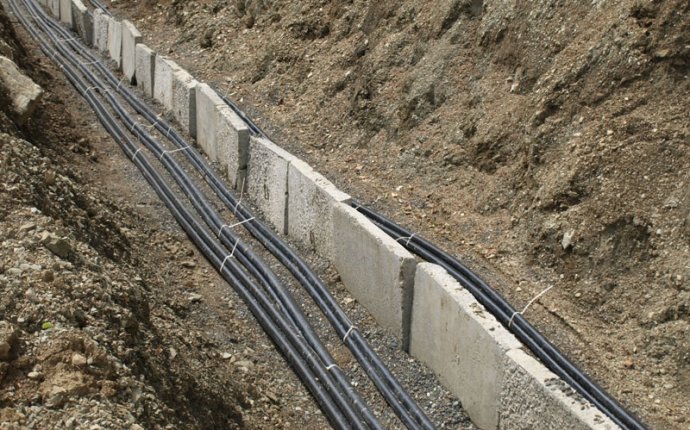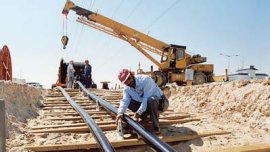
Cable Lines
 Cable lines may be laid in the ground (land tranches), water or cable structures (air).
Cable lines may be laid in the ground (land tranches), water or cable structures (air).
Cable installations are specifically designed to accommodate cables and are cable tunnels, canals, blocks, floors, double floors, cables, galleries, recharge points (necessary for oiled cables).
Cable channels are closed and partially or completely deep into the ground, floor or non-cooling intended to accommodate cables. The largest section size of the cable canal is 1,200 x 1,200 mm. His walls are fitted with shelves or suspensions on which cables are placed in one row. However, the power cables above 1 kV are placed along one wall on the upper shelves. The tunnels in the ground are down to 300. .700 mm.
Partially deep cable channels, called semi-ground, shall be 150 to 350 mm above the design mark. The cabling, inspection and repair may be carried out only when the tunnel is closed.
In the case of parallel cables, more than 20 tunnels are used.
The cable tunnel is a closed structure with the support structures located along the walls to accommodate cables and cable fluffs, free passage through the length (Tunnel rectangular section measurements - 1,500 x 2100 mm) allowing the cabling, inspection and repair of cables. Power cables above 1 kW shall be placed along both tunnel walls on the upper shelves.
Cable tunnels are more expensive cablesas they should include separations with independent ventilation, fire escape hats, etc. At the same time, in cable channels and tunnels, the worst conditions for the cooling of cables compared to the laying in the ground.
Collect is an engineering structure designed to store not only electrical cables, but also pipes, heat lines, plumbing, pipes, sewerage.
For several parallel cable lines and the high probability of their mechanical damage (especially a low depth) the cables shall be packed in blocks.
The cable block is the construction of tubes (canals) for the laying of cables with the Kolods belonging to it.
Cable blocks are built with single-channel horns, asbestos cement, or. ♪ ♪
The heating of the cab shall be stopped when the outside surface temperature of the cab is 20 °C (at external air temperature -10 °C) or 30 °C (at external air temperature -20 °C).









